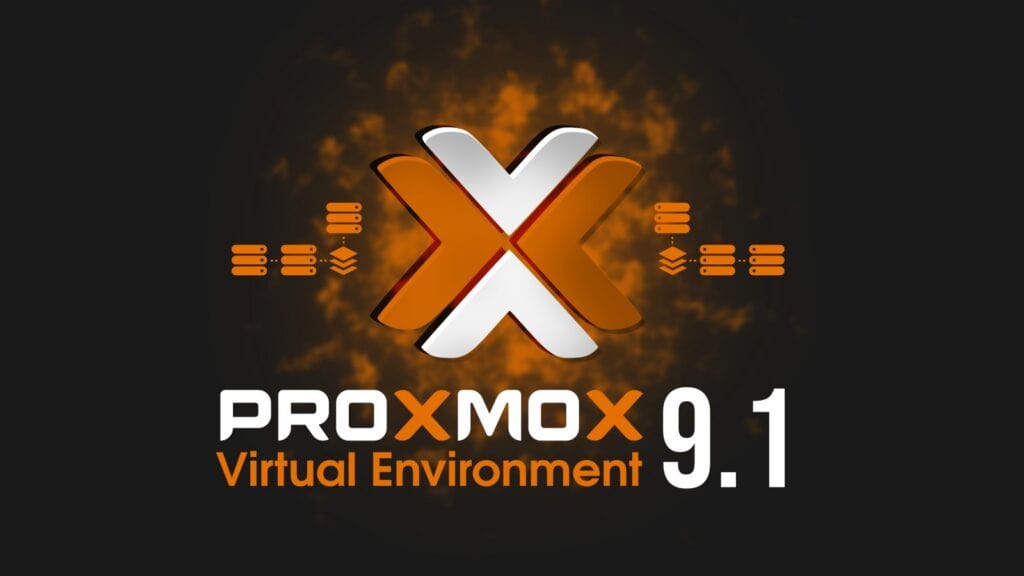Over three months after the previous major 9.0 release, Proxmox, a powerful, free, open-source virtualization platform with over 1.6 million installed hosts worldwide, unveiled the first update to the series, Proxmox Virtual Environment 9.1. The release builds on Debian 13.2 “Trixie” and ships with kernel 6.17.2, QEMU 10.1.2, LXC 6.0.5, ZFS 2.3.4, and Ceph Squid 19.2.3 under the hood.
One of the most notable additions is support for creating LXC containers from OCI images. Administrators can now pull standard OCI images from registries or upload them manually and use them directly as templates.
Depending on the image, Proxmox provisions either full system containers or lean application containers, the latter optimized for microservices with minimal overhead. Application containers also gain host-managed DHCP and configurable environment variables, improving deployment flexibility without requiring a full userspace network stack.
Security-sensitive VM workloads benefit from the new ability in this update to store vTPM state in qcow2 format. This enables file-level snapshots of VMs with an attached virtual TPM across NFS, CIFS, and other non-raw storage back ends. LVM storage using volume-chain snapshots also supports offline snapshots of VMs with active TPM state.
On top of that, Proxmox 9.1 additionally introduces initial support for Intel TDX, extending its confidential computing coverage alongside AMD SEV.
Nested virtualization receives finer control through a new vCPU flag that enables virtualization extensions on top of a vendor-matched vCPU profile. This approach avoids exposing the full host CPU type while still allowing workloads such as nested hypervisors or Windows environments using Virtualization-based Security to operate correctly.
On the network side, Proxmox VE 9.1 expands SDN status reporting with detailed visibility directly in the GUI. Administrators can now see which guests are connected to specific bridges or VNets, monitor EVPN-learned MAC and IP information, and inspect fabrics for routes, neighbors, and interfaces. IP-VRFs and MAC-VRFs are likewise surfaced in the interface.
Regarding the web interface, bulk actions can now be triggered from Tag View, VMs can be reset via right-click, and the mobile interface now supports OIDC login, pending-change indicators, and direct editing of VM options. Additionally, the global search bar has been repositioned for better visibility, high-resolution icons replace older assets, and numerous issues affecting performance, session handling, and resource display have been addressed.
On the container side, compatibility has been expanded across openSUSE Leap 16.0, Ubuntu 25.10 and 26.04, Debian 13 point releases, AlmaLinux 10, and CentOS 10. Proxmox also resolves networking issues in newer Debian containers by installing isc-dhcp-client and ifupdown2 during container creation, disabling systemd-networkd-wait-online to prevent startup delays, and lifting certain /proc and /sys restrictions in nested setups.
Lastly, Proxmox notes several known issues tied to the new kernel. NVIDIA’s GRID/vGPU drivers are currently incompatible with kernel 6.17, and users are advised to remain on 6.14 until an updated driver arrives. Some Dell PowerEdge systems experience machine check errors during boot with 6.17, and DRBD/LINSTOR users must also avoid the new kernel until compatibility improves. In all cases, pinning the 6.14 kernel is the recommended workaround.
Check out the announcement or review the full changelog for the complete list of changes.
Proxmox Virtual Environment 9.1 is available for download at Proxmox’s official site. The ISO includes the complete feature set and is ready for installation on bare-metal servers. For those of you still on Proxmox VE 8.4, here’s the official documentation on upgrading to 9.
